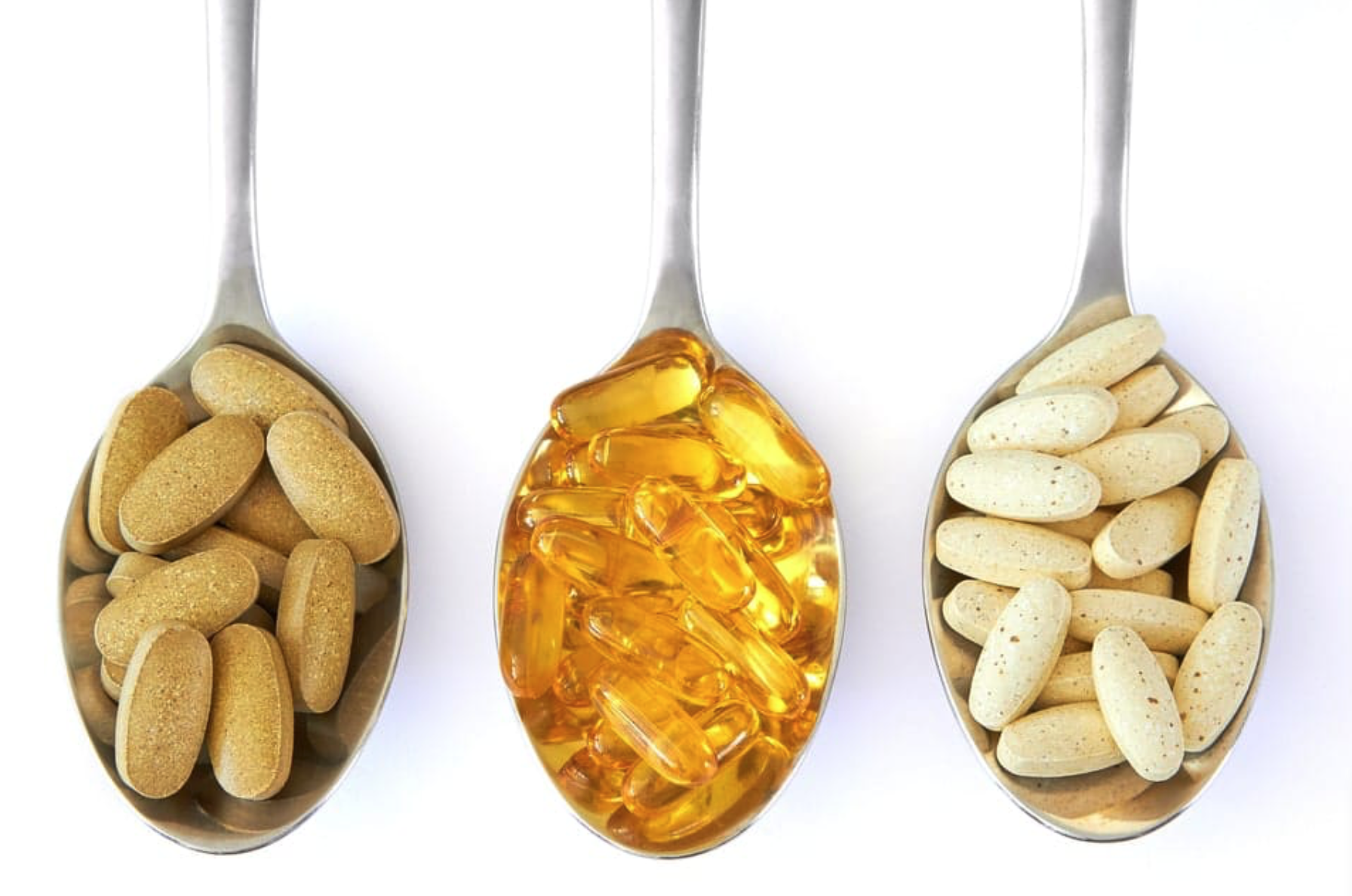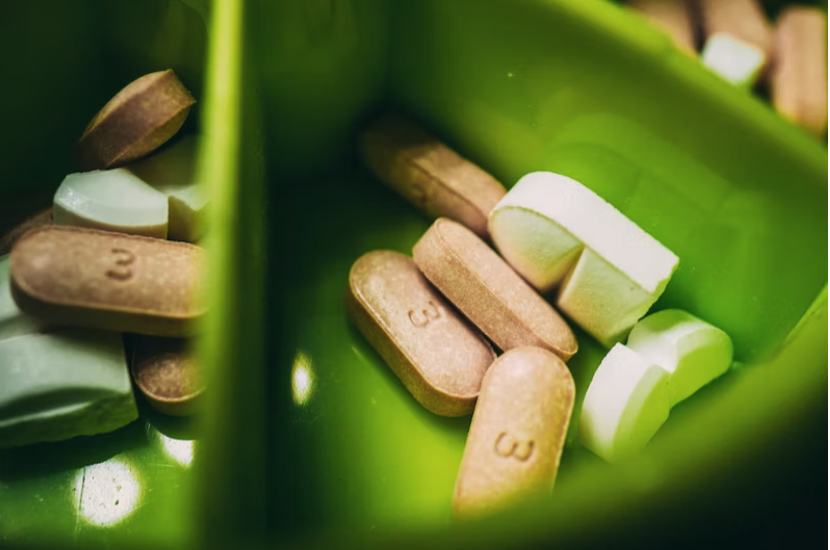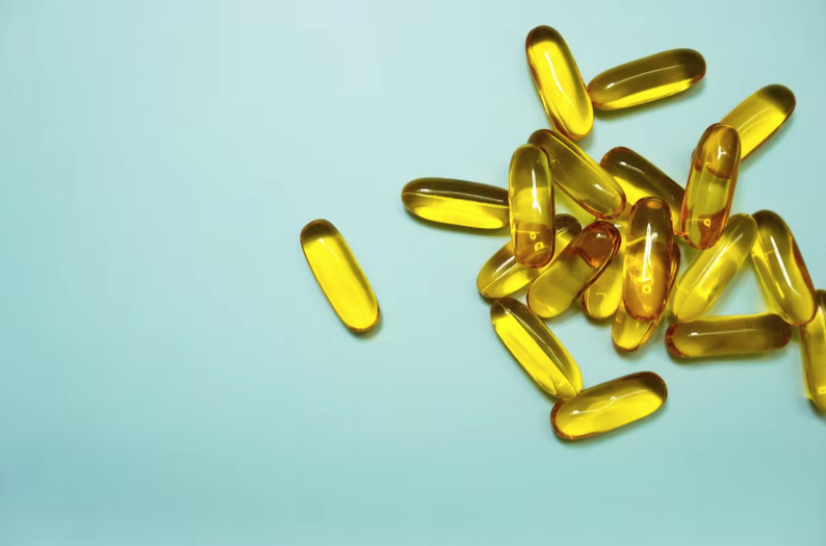In an ideal world, humans would get all the nutrients they need from their food. Nowadays, fruits and vegetables have been transformed to be more beautiful, bigger, sweeter and have nothing to do with their original version which contained considerable levels of vitamins and minerals. This loss of nutrients has been amplified with the arrival of intensive agriculture, which has depleted the soil. Thus, in the last 60 years in France, the most consumed fruits and vegetables would have lost on average 16% of their calcium, 27% of their vitamin C and 48% of their iron.
Even with a perfect organic and local diet, it seems that we can no longer get the vitamins and minerals we need from the food we eat alone.
In my practice through the Oligoscan SoCheck test, I see that people very frequently have deficiencies, mainly in vitamin C and D, folic acid, zinc, magnesium, phosphorus and iodine. But not only.

What is a “good” supplement?
For a large majority of the population, nutritional supplements have become indispensable to stay healthy. This post addresses a recurring question: what criteria define a good supplement?
Today, the offer of dietary supplements is vast. You can buy them in pharmacies, in organic stores but also in supermarkets and on the internet. The market of supplements represents more than 62 billion per year in the US and 2 billions in France. As the price differences can be considerable, the temptation is great to choose a cheaper product, and we will see why it is not a very good idea.
Choosing your supplements wisely requires a little education. There are several criteria to take into consideration if you want to supplement with quality products, mainly:
- Bioavailability, which depends on the form used (organic or synthetic)
- The formulation (taking ingredient synergies into account)
- The use of additives (preservatives, anti-caking agents, colorants, bulking and coating agents, etc)
- The quality of the ingredients
Bioavailability/form used
Some studies show that synthetic forms are much less assimilable than natural forms. This also appeals to our common sense when we understand that the body recognizes physiological forms of food and in most cases it does not know how to process what is of synthetic or artificial origin.
Examples:
– Vit B12 -> Preferred form: methyl colabamine or methyl hydroxo adenosyl colabamine – Form to avoid: cyanocolabamine (synthetic).
– Vit B9 (Folic acid) -> Preferred form: methylfolate – Form to avoid: folic acid or Vit B9 (synthetic). Vitamin B9 needs a methyl group to be synthesized by the liver and then assimilated by the body. Depending on genetic predisposition, folic acid can damage the MTHFR (methyl tetra hydro folate reductase) gene and cause fertility problems, problems with the female cycle, or an increase in homocysteine levels (high homocysteine is linked to cardiovascular accidents and risk of Alzheimer’s disease).
– Vitamin D -> Preferred form: D3 or colecalciferol. Form to avoid: D2, ergocalcipherol.
– Vit E -> Preferred form: a mix of D-gamma tocopherol, D-delta tocopherol, D-alpha tocopherol – Form to be avoided: dl-alpha-tocopherol (synthetic).
– Magnesium -> Preferred form: glycinate, citrate, malate, threonate. Ask a professional for advice and he will tell you which form is best suited to your needs according to your profile and constitution. Forms to avoid: carbonate, sulfate, gluconate or oxide.
Generally speaking, when it comes to minerals, avoid inorganically bound minerals (in the form of oxide, sulphate, phosphate, carbonate, gluconate, silicate), which are the cheapest and most common forms, but the least assimilable or absorbable. If what you swallow ends up in your urine without entering your cells, you are simply wasting your money, if not hurting yourself.
Formulation
The concept of synergy is crucial when it comes to formulating effective and therapeutic vitamin and mineral supplements. Without optimal synergistic formulation, many supplements fail to be absorbed by the cells where they are most needed. When this happens, not only do the minerals fail to perform the functions they were designed to perform, but they can also accumulate and harm the body if not absorbed.
Examples:
Calcium: if the supplement is not formulated to work synergistically with compounds that allow absorption by the cells, accumulation occurs and calcium deposits eventually form in the joints. Every manufacturer should consider which compound is best to formulate with calcium to allow for absorption and avoid accumulation. This is not always the case.
Vitamin D3: combined with vitamin K2, it works together to protect the bone structure and help the body maintain healthy muscles. This D3/K2 couple will promote the intestinal absorption of calcium in order to guarantee its fixation on the bones. Another synergetic effect: acting on inflammatory states. Vitamin D helps manage the production of inflammatory mediators, while vitamin K2 blocks the inflammatory cascade by inhibiting one of its mediators.
Magnesium: its recommended association is with vitamin B6, which favors its entry into the cell, and with taurine, an amino acid that maintains it (or fixes it) in the cell.
Vitamin C: its action is boosted by the association with bioflavonoids that increase its absorption and delay its elimination. The synergy between the two also allows a better protection of the cells and the neutralization of toxins. Bioflavonoids are super antioxidants (they are what give fruits and vegetables their purple, yellow and red colors). They have been called vitamin P in the past, but their deficiency does not cause any particular symptoms, so they are not a vitamin. Their action is however particularly interesting. Vitamin C is also associated with alkalizing minerals (calcium, magnesium, potassium) in order to buffer its acidity to improve its digestive tolerance.

Photo Mika Baumeister
Additives
If you are sensitive and take supplements to improve your health, choosing supplements without additives is crucial.
Again, you need to educate yourself to read and interpret the labels. The position of the lʼingredient in the list has its importance. The first one marked is the most predominant in quantity. If you see for example maltodextrin, lactose, glucose syrup or dextrose among the first ingredients, it is not a good sign.
Example:
Becozym C Plus, a multi vitamin and mineral product from Bayer, sold in pharmacies. We find in the list of ingredients:
1. Vitamin C
2. Magnesium carbonate and oxide
3. Lactose
4. Stabilizers (povidone k90, croscamelose sodium and Opadry II Brown 45U27264 TAN)
5. Colorants (titanium dioxide, iron oxide yellow, red and black)
6. Fractionated coconut oil
7. Bulking agent (manitol)
8. Vitamin B1 (synthetic, thiamine mononitrate)
9. Vitamin B2 (ribiflavin)
10. Anti-caking agent and coating agent (talc and magnesium stereate)
11. Zinc (citrate)
12. Vitamin B6 (cl+piridoxine chloridrate)
13. Folic acid
14. Biotin (D-biotin)
15. Vitamin B12 (cianocolabamine)
If you have followed the beginning of this article, you will understand that the forms of vitamins and minerals are largely synthetic and that the 3rd to 7th position feature undesirable substances, giving an indication of low quality.
Let’s take a closer look at the additives in this product.
Croscamelose sodium
It has a negative impact on the intestinal flora and could also promote inflammatory bowel diseases. The French Association for Therapeutic Cancer Research (ARTAC) considers this additive as a possible carcinogen. Its toxicity has been noted in mice.
Titanium dioxide
Titanium dioxide can be used as a colorant or filler to improve the appearance of a tablet. It whitens the supplement to prevent any objectionable color. Although titanium dioxide is still a commonly used additive in dietary supplements, it is important to know that the European Food Safety Authority (EFSA) has recently determined that titanium dioxide can no longer be considered safe as a food additive. The use of titanium dioxide as a food additive is already banned in France and will soon be banned in Europe.
Magnesium stearate
Magnesium stearate is a lubricating agent: it is added to products to prevent them from sticking to equipment during the manufacturing process. It is also used as an additive (anti-caking agent), as it prevents the ingredients from clumping together inside the capsule. While the health risks of magnesium stearate are supposed of not concern to the general public, it adds unnecessary and nutritionally worthless ingredients to the final product. Some scientists suggest that there is not enough research on the impact of long-term cumulative exposure on human health, so more research is needed.
Artificial colors
Manufacturers of dietary supplements often add them to help consumers make a connection with a product or to compensate for color loss during processing. For example, since vitamin C is often associated with the color orange, a manufacturer may use an artificial coloring agent to produce this association. However, such additives have no impact on the effectiveness of the product. Their addition is unnecessary.
The list of undesirable elements in supplements is long, much too long, and here is a summary of what should be banned in priority:
- Polysorbate 80 (E432 to E436)
- Silicon dioxide
- Titanium dioxide
- Microcrystalline cellulose (E460i)
- Disodium ethylene diamine tetra-acetate (E386)
- Potassium bromate (E924)
- Calcium bromate (E924b)
- Chlorine oxide (E926)
- Magnesium stearate (E572)
- E951 (aspartame), E953 (isomaltulose), E954 (saccharin), E961 (neotame), E969 (adavatame), E950 (acesulfame potassium), E211 (sodium benzoate), E202 (potassium sorbate), benzoates and sorbates (E201, E203, E210, E212, E213)
In short, a quality supplement should be:
- Free of titanium dioxide and silica
- Free of nanoparticles
- Free of excipients (preservatives and additives)
- Free of synthetic solvents
- GMO free
- No hydrogenated oils
- No coatings
Nanoparticles are found in silicon dioxide (E151), zinc oxide or iron oxide, polysorbate 80 or polysorbate 20 (E432-E436). Liposomal formulations proposed for example for vitamin C, the CoQ10 enzyme, glutathione, sometimes use nanoparticle-based surfactants to encapsulate the fat droplets.
By consuming dietary supplements without these elements, you avoid substances suspected of being carcinogenic, allergenic and capable of causing behavioral disorders.

Photo Content Pixie
Ingredients quality
Finally, to choose wisely, your dietary supplement should be of organic quality. In theory, the AB or Ecocert labels guarantee the non-use of petrochemical components which are, in most cases, harmful to health.
Also, the ingredients used are guaranteed to be 95 to 100% organically grown.
The use of organic raw materials, especially herbs, also ensures that the ingredients have been tested and do not contain toxins such as mercury or lead.
Environmental toxins like heavy metals are enzyme inhibitors. When enzyme function is low, the body does not digest completely, which in most cases results in malabsorption.
We must not forget the active ingredients of the plants, which are only included in quality organic food supplements. These active substances contained in plants and fruits are the main interest of food supplements.
🌱🌱🌱🌱🌱🌱🌱🌱🌱🌱🌱🌱🌱🌱🌱🌱🌱🌱🌱🌱🌱🌱🌱🌱🌱🌱🌱🌱🌱🌱🌱🌱🌱🌱🌱🌱
In summary, dietary supplements (vitamins, minerals, essential fatty acids, digestive enzymes, probiotics, plants, etc.) provide valuable support, but quality is a key factor. In the short term, we can take a medium quality supplement, for example one that contains magnesium stereate, because the positive effects will outweigh the negative ones. For sensitive individuals or for those who take supplements year round, looking for the best price is not a smart option.
If you are recharging your batteries with a magnesium that cannot be assimilated, a turmeric with pesticide residues, a badly formulated multivitamin or a probiotic filled with a bulking agent to which you are intolerant, you are throwing your money out the window and will not greatly improve your health status.





